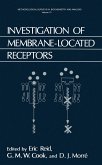Allosterism has long been used by Nature to control the activity of its receptors and enzymes. The binding of a cofactor to an allosteric site induces conformational changes in the receptor rendering its binding (active) site unsuitable to accommodate the substrate. The activity of the receptor is regenerated by removing the allosteric cofactor or by regulating its binding properties. This book describes the utilization of allosterim to control the binding activity of man-made synthetic receptors. The strategies and the elements of allosteric control that are vital in the design of a receptor with hydrogen-bonding active site are presented. The book also introduces different approaches and cofactors for activity control. Finally, detailed experimental procedures for synthesis and binding investigations of a series of artificial receptors are demonstrated including NMR titrations.
Bitte wählen Sie Ihr Anliegen aus.
Rechnungen
Retourenschein anfordern
Bestellstatus
Storno








